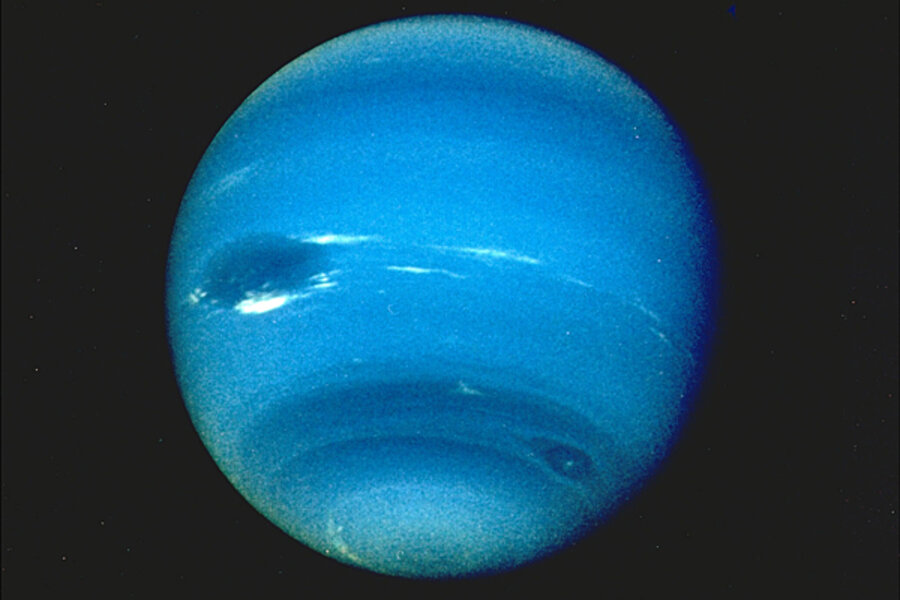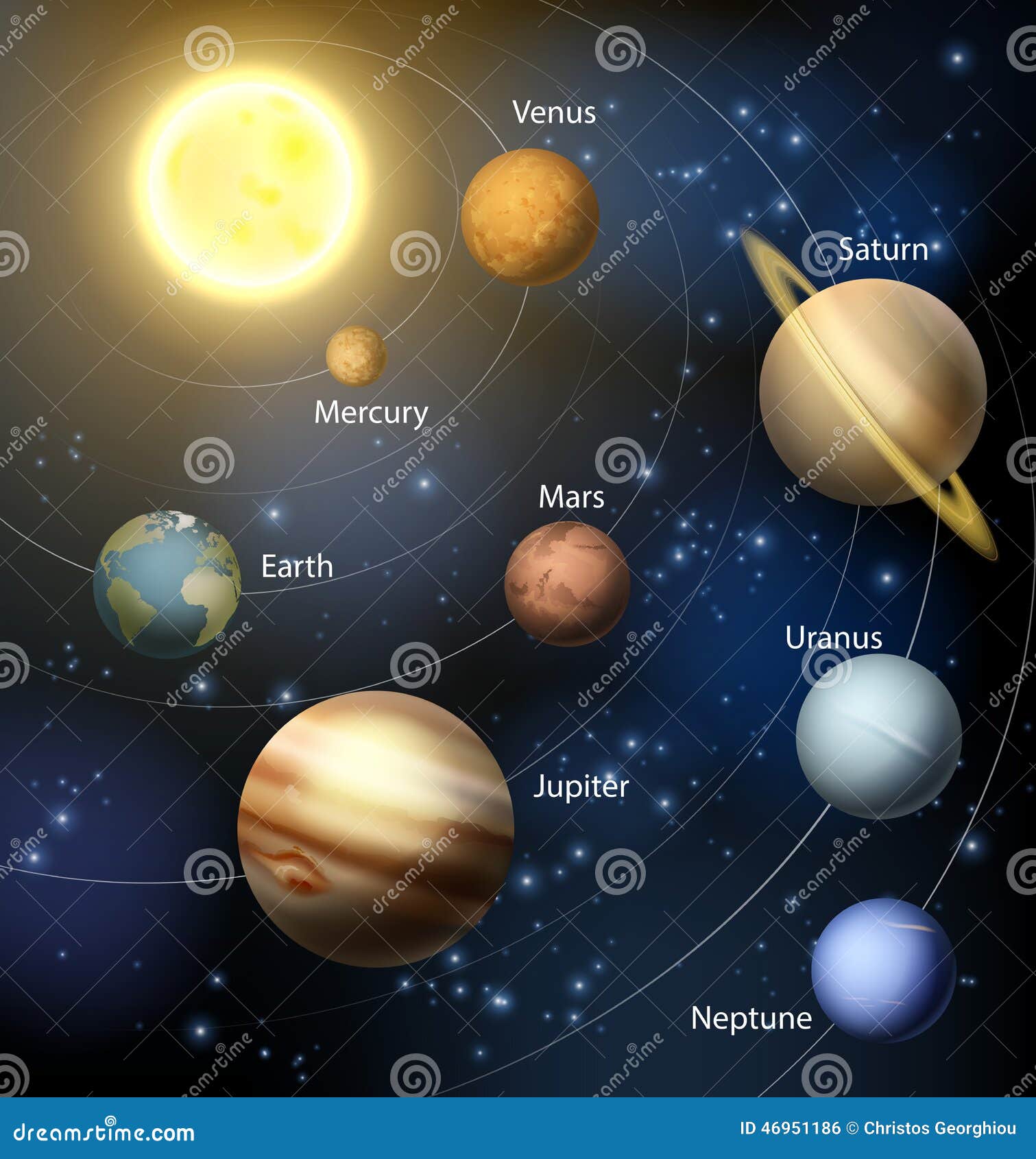
Neptune Orbit Day
) in its atmosphere; this molecule absorbs red light.Orbit and Rotation One day on Neptune takes about 16 hours (the time it takes for Neptune to rotate or spin once). And Neptune makes a complete orbit around the Sun (a year in Neptunian time) in about 165 Earth years (60,190 Earth days). Sometimes Neptune is. The moons in the first category, with the exception of Neptune's moon Triton, orbit near the equatorial plane. He concluded that these moons formed from equatorial accretion disks. But he found that our moon, although it was once inside the critical distance from the earth, never had an equatorial orbit as would be expected from various.
Neptune cannot be seen using the eyes alone. Neptune was the first planet whose existence was predicted mathematically (the planet Uranus's orbit was perturbed by an unknown object which turned our to be another gas giant, Neptune).
SIZE
Neptune is about 30,775 miles (49,528 km) in diameter. This is 3.88 times the diameter of the Earth. If Neptune were hollow, it could hold almost 60 Earths.
Neptune is the fourth largest planet in our Solar System (after Jupiter, Saturn, and Uranus).
MASS AND GRAVITY
Neptune's mass is about 1.02 x 1026 kg. This is over 17 times the mass of the Earth, but the gravity on Neptune is only 1.19 times of the gravity on Earth. This is because it is such a large planet (and the gravitational force a planet exerts upon an object at the planet's surface is proportional to its mass and to the inverse of its radius squared).
A 100-pound person would weigh 119 pounds on Neptune.
LENGTH OF A DAY AND YEAR ON NEPTUNE
Each day on Neptune takes 19.1 Earth hours. A year on Neptune takes 164.8 Earth years; it takes almost 165 Earth years for Neptune to orbit the sun once.
Since Neptune was discovered in 1846; since then it completed about a single revolution around the sun.
NEPTUNE'S ORBIT AND DISTANCE FROM THE SUN
Neptune is about 30 times farther from the sun than the Earth is; it averages 30.06 A.U. from the sun. Occasionally, Neptune's orbit is actually outside that of Pluto; this is because of Pluto's highly eccentric (non-circular) orbit. During this time (20 years out of every 248 Earth years), Neptune is actually the farthest planet from the Sun (and not Pluto). From January 21, 1979 until February 11, 1999, Pluto was inside the orbit of Neptune. Now and until September 2226, Pluto is outside the orbit of Neptune.
At aphelion (the point in Neptune's orbit farthest from the sun) Neptune is 4,546,000,000 km from the sun, at perihelion (the point in Neptune's orbit closest from the sun) Neptune is 4,456,000,000 km from the sun.
Neptune's rotational axis is tilted 30 degrees to the plane of its orbit around the Sun (this is few degrees more than the Earth). This gives Neptune seasons. Each season lasts 40 years; the poles are in constant darkness or sunlight for 40 years at a time.
TEMPERATURE
The mean temperature is 48 K.
DISCOVERY OF NEPTUNE
Neptune's existence was predicted in 1846, after calculations showed perturbations in the orbit of Uranus. The calculations were done independently by both J.C. Adams and Le Verrier. Neptune was then observed by J.G. Galle and d'Arrest on September 23, 1846.
SPACECRAFT VISITS
Neptune was visited by NASA's Voyager 2 in August, 1989. Before this visit, virtually nothing was known about Neptune.
NEPTUNE-EARTH COMPARISON
NEPTUNE'S NAME AND SYMBOL
Neptune Orbital Velocity
This is the symbol of the planet Neptune. |
NEPTUNE ACTIVITIES
Neptune Orbit Size

Neptune coloring page
Neptune Orbits
Find It!, a quiz on Neptune.
Neptune Cloze Printout: A fill-in-the-blanks activity on the planet Neptune. Answers
An interactive puzzle about Neptune
 Introduction
IntroductionWe don't know with what beverage William Lassell may have celebrated his discovery of Neptune's moon, Triton, but beer made it possible.
Lassell was one of 19th century England's grand amateur astronomers, using the fortune he made in the brewery business to finance his telescopes. He spotted Triton on Oct. 10, 1846 -- just 17 days after a Berlin observatory discovered Neptune. Scientists using powerful telescopes and spacecraft have since discovered a total of 14 moons orbiting the distant world.
Curiously, a week before he found the satellite, Lassell thought he saw a ring around the planet. That turned out to be a distortion caused by his telescope. But when NASA's Voyager 2 visited Neptune in 1989, it revealed that the gas giant does have rings, though they're far too faint for Lassell to have seen them.
OverviewOverview
Triton (not to be confused with Saturn's moon, Titan), is far and away the largest of Neptune's satellites. Dutch-American astronomer Gerard Kuiper (for whom the Kuiper Belt was named) found Neptune's third-largest moon, Nereid, in 1949. He missed Proteus, the second-largest, because it's too dark and too close to Neptune for telescopes of that era. Proteus is a slightly non-spherical moon, and it is thought to be right at the limit of how massive an object can be before its gravity pulls it into a sphere.
Proteus and five other moons had to wait for Voyager 2 to make themselves known. All six are among the darker objects found in the solar system. Astronomers using improved ground-based telescopes found more satellites in 2002 and 2003.
Voyager 2 revealed fascinating details about Triton. Part of its surface resembles the rind of a cantaloupe. Ice volcanoes spout what is probably a mixture of liquid nitrogen, methane and dust, which instantly freezes and then snows back down to the surface. One Voyager 2 image shows a frosty plume shooting 5 miles (8 kilometers) into the sky and drifting 87 miles (140 kilometers) downwind.
Triton's icy surface reflects so much of what little sunlight reaches it that the moon is one of the coldest objects in the solar system, about -400 degrees Fahrenheit (-240 degrees Celsius).

Triton is the only large moon in the solar system that circles its planet in a direction opposite to the planet's rotation (a retrograde orbit), which suggests that it may once have been an independent object that Neptune captured. The disruptive effect this would have had on other satellites could help to explain why Nereid has the most eccentric orbit of any known moon - it's almost seven times as far from Neptune at one end of its orbit as at the other end.
Neptune's gravity acts as a drag on the counter-orbiting Triton, slowing it down and making it drop closer and closer to the planet. Millions of years from now, Triton will come close enough for gravitational forces to break it apart—possibly forming a ring around Neptune bright enough for Lassell to have seen with his telescope.
How Neptune Moons Get Their NamesHow Neptune Moons Get Their Names
Since Neptune was named for the Roman god of the sea, its moons were named for various lesser sea gods and nymphs in Greek mythology.




